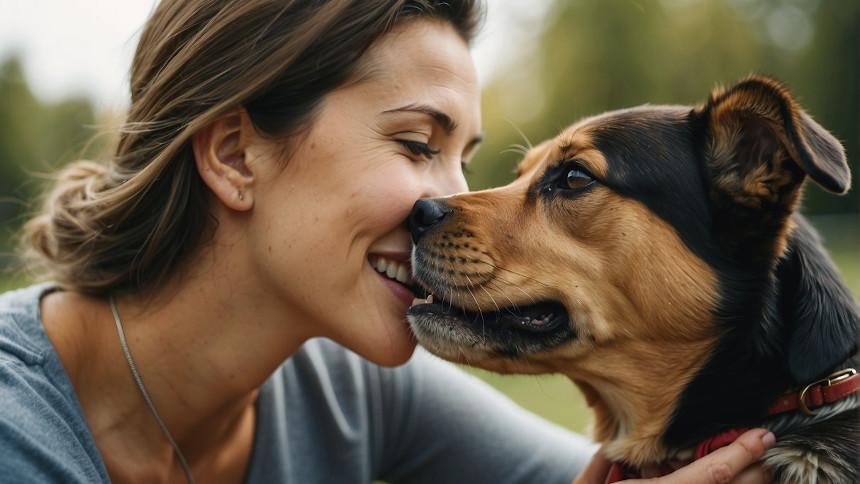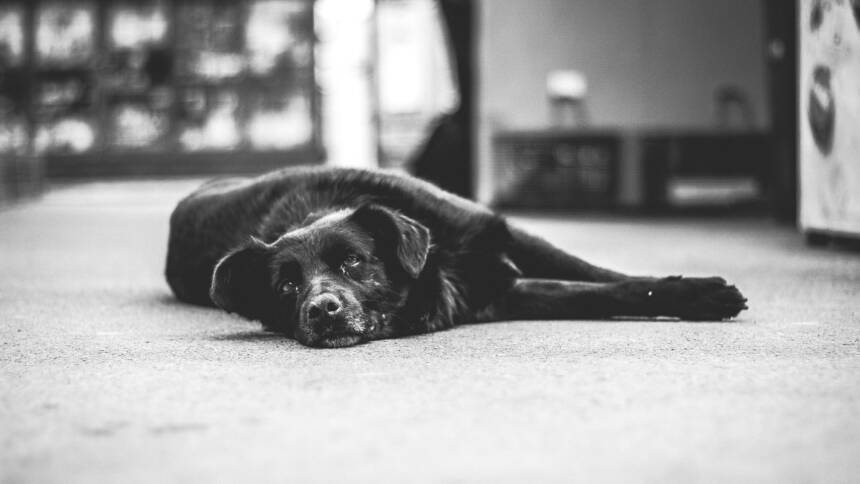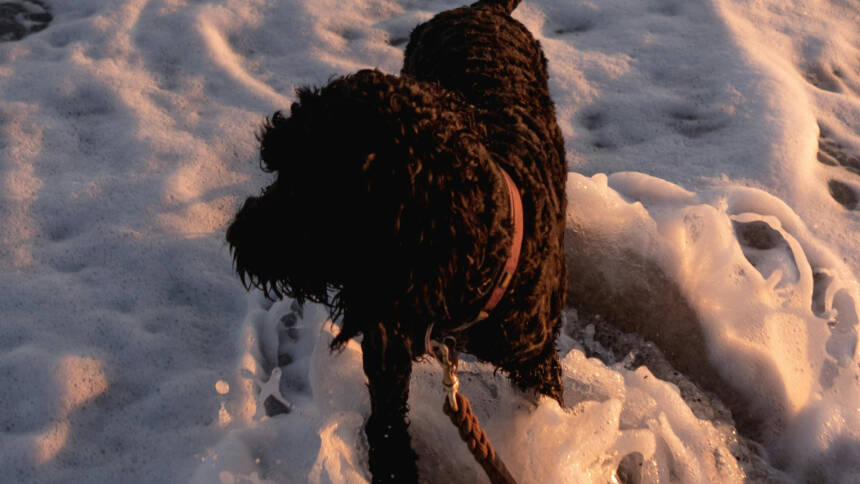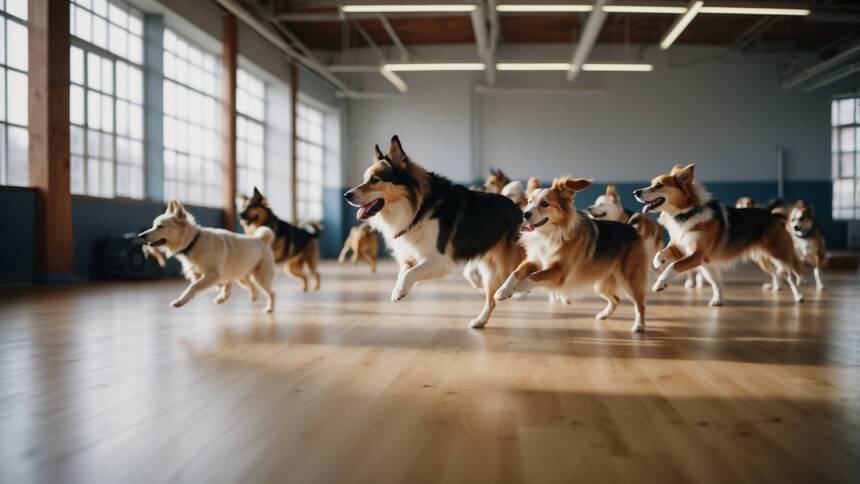Atlantoaxial luxation, often referred to as AA luxation, is a spinal disorder characterized by excessive movement at the junction between the first two cervical vertebrae, the atlas and the axis. This condition typically results in instability of the neck in dogs, with a greater prevalence among young and small breed canines. Toy Poodles, Miniature Poodles, Yorkshire Terriers, Pomeranians, and Chihuahuas are breeds frequently diagnosed with this ailment, although larger breed dogs and even cats can experience this type of luxation, usually due to traumatic injury.
The implications of AA luxation in dogs can range from neck pain and discomfort to more severe neurological issues, including paralysis. Instability between the atlas and axis leads to spinal cord compression, the degree of which determines the severity of clinical symptoms. Treatment options and prognosis can vary based on the extent of the luxation and the duration of the spinal cord compression.
Veterinary attention for this condition encompasses a detailed neurological assessment, which is essential for accurate diagnosis and determining the most effective course of management. Conservative treatments may include rest and stabilization, while severe cases may necessitate surgical intervention. The goal of treatment is to alleviate discomfort, prevent further injury to the spinal cord, and maintain the dog’s quality of life.
Understanding Atlantoaxial Luxation
Atlantoaxial Luxation involves instability in the cervical spine, which can lead to serious neurological issues in dogs. This section examines the anatomy, joint function, and causes of this condition.
Anatomy of the Cervical Spine
The cervical spine in dogs comprises various bones called vertebrae, with the atlas (C1) and axis (C2) being the uppermost two. These specialized vertebrae provide support and movement for the head and protect the spinal cord as it passes through the neck.
Function of Atlantoaxial Joint
The atlantoaxial joint is the pivotal point that allows for the rotation of the head. It consists of the atlas, which holds the skull, and the axis, which allows the head to pivot. In healthy dogs, this joint is stable, permitting controlled neck movements without damaging the spinal cord.
Causes of Luxation
Atlantoaxial luxation occurs when the ligaments that normally stabilize this joint are not properly formed, are damaged or weakened. This is more prevalent in certain small breed dogs and can be the result of a genetic malformation or trauma. The instability leads to abnormal movement between the atlas and axis, which can compress the spinal cord and result in pain or neurological deficits.
Symptoms and Diagnosis
Recognizing the symptoms of atlantoaxial (AA) luxation and obtaining an accurate diagnosis are critical for the effective management of this condition in dogs. The process involves identifying clear clinical signs and using diagnostic imaging techniques.
Clinical Signs of AA Luxation
Dogs suffering from AA luxation typically exhibit a constellation of symptoms due to the instability between the first two cervical vertebrae, the atlas, and the axis. These symptoms include:
- Pain: Manifested as vocalization or reluctance to move the neck
- Instability: Difficulty in maintaining normal neck movements
- Neck pain: Notable discomfort upon palpation or movement
- Neurological signs: Varying in severity from weakness to paralysis
A physical examination may also reveal a neck brace posture or head tilt, indicating an attempt by the dog to alleviate discomfort. The severity of clinical signs can provide an indication of the extent of the luxation and subsequent spinal cord compression.
Diagnostic Imaging
To confirm a diagnosis of AA luxation, veterinarians rely on various imaging modalities:
- Radiographs (X-rays): Initial screening to visualize the extent of misalignment.
- Lateral views are preferred to check for alignment and spacing between C1 and C2.
- CT scans: Offer a more detailed assessment of the bony structures and can aid in planning for surgical interventions.
- MRI: Crucial for evaluating the presence and extent of spinal cord compression or associated soft tissue injury.
Advancements in diagnostic imaging have made it possible to diagnose AA luxation with a high degree of accuracy, guiding the treatment plan and allowing for better prognostication.
Treatment Options
Treatment for Atlantoaxial Luxation in dogs typically involves two primary approaches: Conservative Management or Surgical Intervention. The choice of treatment depends on the severity of the condition, the dog’s overall health, and the potential for recovery.
Conservative Management
Conservative therapy may be recommended for less severe cases of Atlantoaxial Luxation or when surgery is not an option. This approach includes:
- Crib Rest: Keeping the dog confined to a small area to limit movement and allow healing.
- Splint: In some instances, a neck brace or splint may be used to stabilize the cervical spine.
- Pain Medication: To manage discomfort during the healing process, pain relievers may be prescribed.
Strict adherence to confinement and controlled activity levels is essential during the conservative treatment phase.
Surgical Intervention
For more severe cases, surgical intervention is often necessary to stabilize the spine. The surgery typically includes:
- Screws and Bone Cement: The use of screws, bone cement, or both to stabilize the first two cervical vertebrae.
The goal of surgery is to provide permanent stability to the Atlantoaxial joint and prevent further neurological damage. Post-operative care is crucial and may include pain management, physical therapy, and controlled activity levels.
Prognosis and Post-Treatment Care
The prognosis for dogs with atlantoaxial (AA) luxation varies, depending on the severity of the condition, the timeliness of diagnosis, and the effectiveness of treatment. Successful recovery often involves a combination of surgical intervention and stringent post-treatment care. The success rate for surgical treatment can be high, with many dogs returning to normal function, though the risk of complications such as recurrence and neurological deficits exists.
Recovery and Rehabilitation
Post-surgery, dogs typically require a period of strict rest, often involving cage confinement to limit movement and allow for healing. Rehabilitation exercises prescribed by a veterinary professional can follow, which might include:
- Assisted walking: Utilizing harnesses or slings to support the dog’s weight during short, controlled walks.
- Physical therapy: Including passive range-of-motion exercises to maintain muscle and joint health without straining the neck.
A tailored rehabilitation regimen plays a critical role in maximizing the chances of a full recovery.
Ongoing Management and Monitoring
Long-term management post-treatment may involve:
- Regular neurological evaluations: To monitor for signs of recurrence or worsening of neurological symptoms.
- Pain management: Including medication and complementary therapies as needed for ongoing comfort.
Owners should monitor their dogs for signs of pain or discomfort, changes in behavior, or neurological signs, and report any concerns to their veterinarian immediately. Regular follow-up appointments are crucial for assessing the healing process and adjusting care plans as needed. With diligent post-treatment care, many dogs can maintain a good quality of life post-surgery.
Commonly Affected Breeds
Certain dog breeds are predisposed to Atlantoaxial (AA) luxation, which is a condition that affects the stability of the spine in the neck region.
Breeds at Higher Risk
The condition primarily affects small breed dogs due to hereditary predispositions in these breeds’ anatomy. Specific breeds known to be at greater risk include:
- Toy Poodles: Small in size with delicate bone structures, making them susceptible.
- Chihuahuas: Their petite build can predispose them to joint abnormalities.
- Yorkshire Terriers: Commonly experience AA luxation, likely due to genetic factors.
Hereditary Factors
Hereditary factors play a significant role in the occurrence of AA luxation. It is often seen that:
- Poodles, both toy and miniature variants, have a genetic tendency for malformations in the cervical vertebrae.
- In breeds like the Yorkshire Terrier, congenital abnormalities in the AA joint surfaces may be passed down through generations, leading to a higher incidence of this condition.
By understanding the breeds at higher risk and the influence of hereditary factors, veterinarians and owners can be vigilant for symptoms of AA luxation in these dogs.
Prevention and Awareness
The prevention of Atlantoaxial (AA) luxation in dogs largely depends on managing risks in susceptible breeds and being vigilant for early signs of the condition. Consideration of breed-specific predispositions and rigorous observation for symptoms can significantly reduce the incidence and severity of this condition.
Reducing Risks in Susceptible Breeds
- Awareness of Predisposition: Veterinarians and pet owners should be aware that certain small breeds, such as Yorkshire Terriers, Pomeranians, and Chihuahuas, have a higher predisposition to AA luxation due to congenital abnormalities.
- Trauma Prevention: To minimize the risk of trauma, which can lead to AA luxation, owners of at-risk breeds should take care to prevent falls from significant heights and restrict rough play or handling that could injure the neck.
- Breeding Practices: Ethical breeding practices must be encouraged, with breeders performing appropriate screening for cervical vertebral malformations before breeding dogs known to carry the risk factors for AA luxation.
Identifying Early Warning Signs
- Observation for Symptoms: Early detection of AA luxation can be pivotal in preventing more severe spinal cord damage. Pet owners should observe for signs such as neck pain, reluctance to move, abnormal head posture, or uncoordinated movements.
- Veterinary Examinations: Regular veterinary check-ups can lead to early diagnosis, particularly when owners report potential symptoms during routine visits. Veterinarians can then perform necessary imaging studies to confirm AA luxation.
- Prompt Action: Should symptoms of AA luxation be observed, immediate veterinary attention is essential to minimize the likelihood of permanent spinal cord injury.
By implementing these preventative measures and maintaining a high level of awareness, both veterinarians and pet owners can contribute to the well-being of dogs potentially affected by AA luxation.








